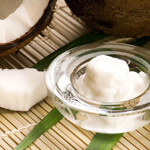
Okra, also called gumbo or lady’s finger, is a tall, flowering plant that is cultivated in tropical, subtropical, and temperate regions around the world. It has been prized for centuries for its edible green pods, which transform into a thick, gooey mucilage once cooked. However, many cultures like to cook okra pods with acidic ingredients, such as lemon juice, which reduces their mucilage and makes them suitable for drier vegetable dishes.
Though not as well-known as other supergreens like broccoli and kale, okra shares a similar nutritional profile to them, and its significant health benefits are gradually being confirmed by peer-reviewed studies.
List of Health Benefits
Antidiabetic properties – A study published in the Journal of Pharmacy and Bioallied Sciences in 2011 found that diabetic rats that were fed okra peels and seed powder over a 28 day period experienced a significant reduction in blood glucose levels compared to the control group. The researchers attributed this result to okra’s high fiber content, which “helps to stabilize blood sugar by regulating the rate at which sugar is absorbed from the intestinal tract.”
Another study published in the Jilin Medical Journal in October 2005 found that regularly consuming cooked okra could help prevent kidney disease. “Those who ate okra daily reduced clinical signs of kidney damage more than those that simply ate a diabetic diet,” concluded the Chinese authors. This information helps to reinforce okra’s antidiabetic properties, since an estimated 50 percent of all kidney diseases are triggered by diabetes.
Digestive benefits – Mucilaginous foods have always been praised for their ability to treat digestive issues, and okra is no exception. A study featured in the Public Library of Science in January 2014, for example, showed that the polysaccharides present in immature okra pods possessed considerable antiadhesive properties (i.e. they help remove the adhesive between bacteria and stomach tissue, preventing the cultures from spreading). Okra’s polysaccharides were particularly effective at inhibiting the adhesion of Helicobacter pylori, a bacterium that dwells in the stomach and can cause gastritis and gastric ulcers if left unchecked. Therefore, eating more okra can keep our stomach clean and create an environment that prevents destructive cultures from flourishing.
Potent natural laxative – Okra’s digestive benefits aren’t just limited to treating stomach problems. According to Self‘s “NutritionData,” One hundred grams of okra contain 10 percent of our recommended daily intake (RDI) of fiber. More important than the quantity of okra’s fiber, however, is its quality. Due to its slippery mucilage, this fiber is not as harsh on the intestinal tract as that of wheat and other hard-textured foods. It smoothly sails down our colon, absorbing all toxins and excess water in its path. Okra’s efficacy in this regard has prompted many researchers to liken it to an oil that lubricates the “engine” of our bodies.
Promotes healthy skin and blood – One hundred grams of okra also contain approximately 27 percent of our RDI of vitamin C and 50 percent of our RDI of vitamin K. Vitamin C is, of course, an essential antioxidant that aids in the growth and repair of bodily tissues. For this reason, eating more okra can rejuvenate our skin and hair, and also shield us from degenerative diseases associated with long-term free radical damage. Vitamin K, on the other hand, plays an important role in blood clot formation. If you suffer from regular nosebleeds, bleeding gums, heavy menstrual bleeding, or easy bruising, your blood might be too thin. Consider adding more vitamin K-rich foods like okra to your diet to improve your blood’s ability to coagulate.






